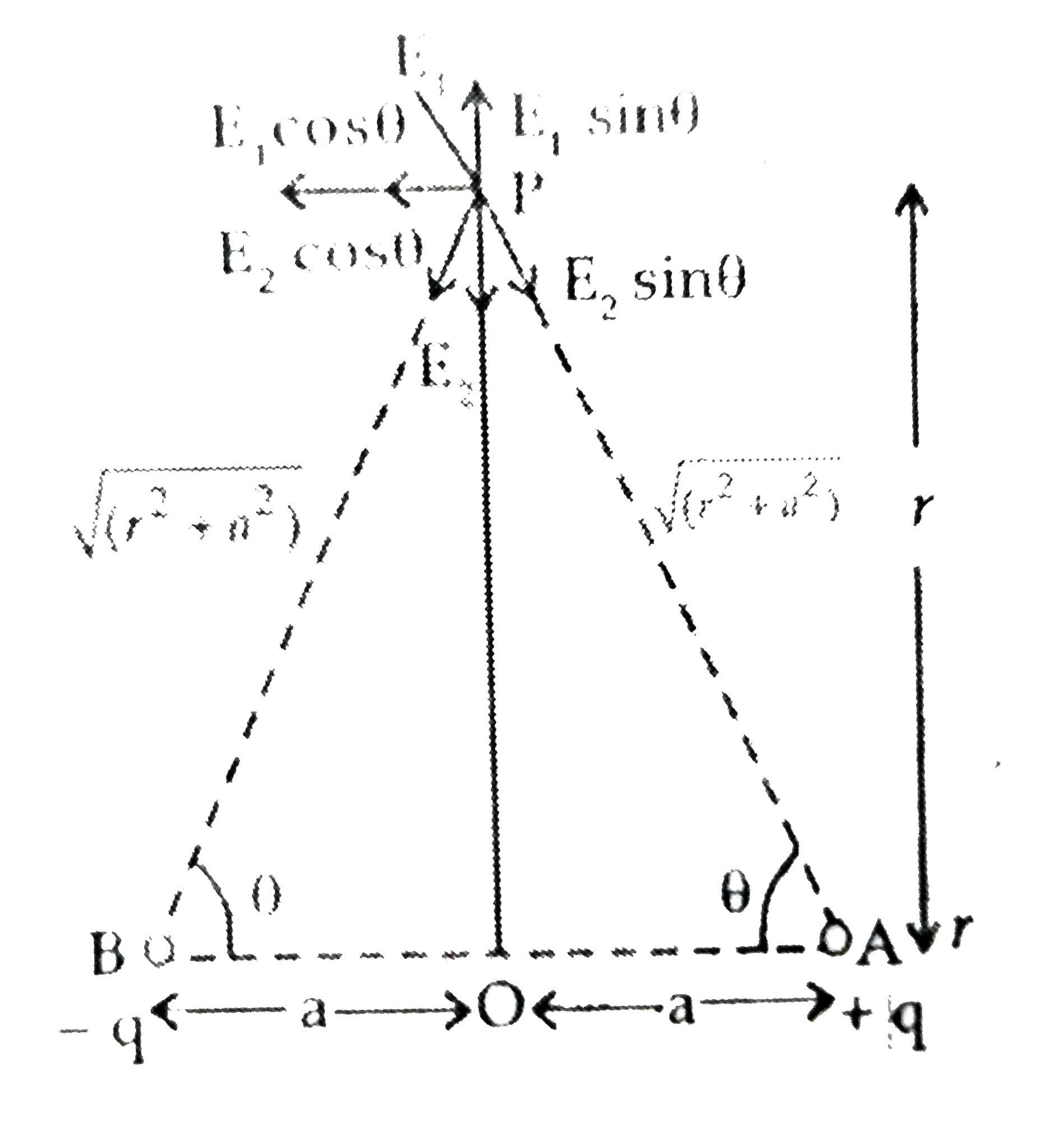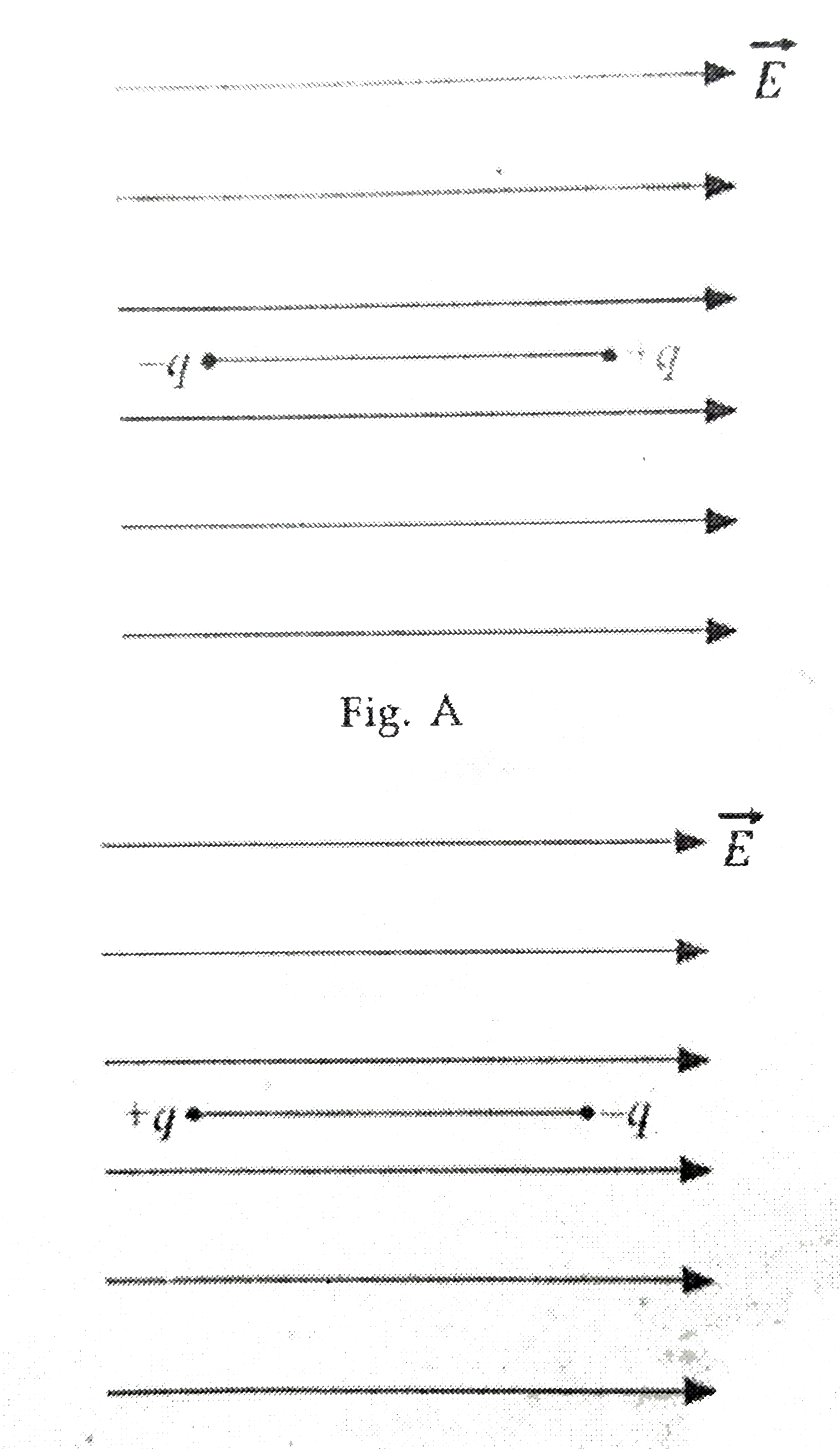InterviewSolution
Saved Bookmarks
| 1. |
(i) Derive the expression for electricfield at a pointon the equatorial line of an electric dipole. (ii) Depiet the orientationof the dipole in (i) stable, (ii) unstable equilibrium in a uniform electric field. |
|
Answer» Solution :(i) Let an ELECTRICDIPOLE AB of 2 point charges - q andq be separated by a smalldistance`= 2a`,with centre at O. `PO = r`. In rt. `DELTAPOA`, `AP^(2) = OA^(2) + PO^(2)` `AP^(2) = a^(2) + r^(2)` Similarly, `BP^(2) = a^(2) + r^(2)` Let`E_(1)` be the electric fieldintensity at Pdue to charge `+q` at B, then,  `vec(E_(1)) = 1/(4piepsi_(o)) xx(q)/((r^(2) + a^(2)))`towards PA and `vec(E_(2)) = (1)/(4piepsi_(0)) xx(q)/((r^(2) xx a^(2)))` towards BP CLEARLY, `(E_(1)) = (E_(2))` `vec(E_(1))` and `vec(E_(2))` has two rectangularcomponents, `E_(1) sin theta` towards PE and `E_(2) cos theta` towards PR and `E_(2) sin theta`towards `PF` and `E_(2) cos theta` towards PR. `E_(1) sin theta` and `E_(2) sin theta` cancel out. `rArrE_("net") = E_(1)cos theta + E_(2) cos theta = 2E_(1) cos theta` `E_("net") = 2 xx 1/(4piepsi_(o)) xx (q)/((r^(2) +a^(2))^(2)) xx q/(SQRT(r^(2) + a^(2)))` `E_("net") = (vec(P))/(4piepsi_(o)(r^(2) + a^(2))^(3//2))` (ii) In stable equilibrium, `theta = 0^(@) pE sin theta= 0` Net force `qE - qE = 0`  In UNSTABLE equilibrium , `theta = 180^(@)` Net force `= qE - qE= 0` `rArr tau = pE 180^(@) = 0` |
|